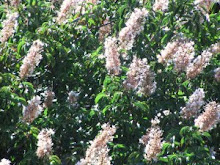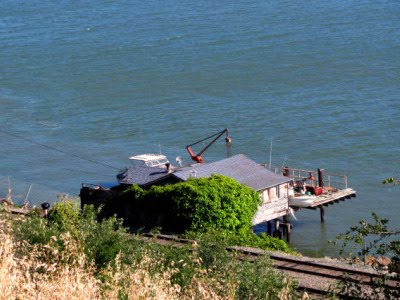As an extremely novice birder, I am enjoying expanding my vocabulary to describe and identify the feathered people living in my new country setting. I could not do this without the help of friends who have flown farther down this particular bird trail. Alison, for one, has become my fall-back gal for identification, but I also rely on the Mt. Diablo Audubon's list-serve, East Bay Birders, for the constant stream of bird notices that are sent out in emails every day, notifying Bay Area folks of who and what and how many are flying through.
My first encounter with birders, however, was not so pleasant. It seemed odd that we would go out all in a bunch, with scopes and guidebooks, while some seemed exceedingly competitive about getting the name out first of a particular bird sited. And, I struggle with whether knowing a bird's name--a man-given nomenclature, after all--really helps me know the bird any better.
Nonetheless, when I spotted this yellow brilliance on a utility pole just outside the house about two weeks ago, I was eager to know what name he goes by (he must surely be a "he," because in the bird realm, the brightest and showiest are usually male). I guessed some kind of oriole by using two or three of the usual birder books (Petersen's, Sibley's), but it was my friend, Alison, who affirmed my suspicion that he is a Hooded Oriole.
Old Hoodie came back after a week. I heard his slight single-noted song, not very fancy but unique and went outside to snap the photo. I feel lucky he has visited twice. This is my first encounter with him and I hope he will return, whether or not I call him by his right name.
We are also getting our red-wing blackbirds in abundance. I took a number of shots down at the Port Costa Reservoir.
Tuesday, April 27, 2010
Wednesday, April 7, 2010
Species Coexistence
Our birdfeeder has finally been discovered by a squirrel, and the neighbor's cat Ziggy. I'm surprised it took a month to attract anyone other than the birds, mostly house finch and scrub jay, a few white-crowned sparrows, who visit the front yard feeder.
On the hillside just opposite our front, we have watched cows and wild turkeys taking turns in the green green grass. They never seem to appear on the same morning.
And, new neighbors . . . getting to know slowly. Each seems a separate species; we are all coexisting in this little corner of the world called Crockett: the gang that spills out of the church hall after AA meetings, the sincere activists fighting the refinery's disregard for the local residents, the older people who gather for a free lunch at the neighborhood community center, the poets who come into town for a once-monthly reading series, and the bicyclers and motorcyclists who roll through on a Sunday, getting a taste of the "country."
We finally partook of our nicest restaurant in honor of Julian's birthday and got some nice shots of the Carquinez Bridge. Water and grassland are our largest surrounding neighbors. We're learning to navigate our existence in between these two amazing ecozones.
On the hillside just opposite our front, we have watched cows and wild turkeys taking turns in the green green grass. They never seem to appear on the same morning.
And, new neighbors . . . getting to know slowly. Each seems a separate species; we are all coexisting in this little corner of the world called Crockett: the gang that spills out of the church hall after AA meetings, the sincere activists fighting the refinery's disregard for the local residents, the older people who gather for a free lunch at the neighborhood community center, the poets who come into town for a once-monthly reading series, and the bicyclers and motorcyclists who roll through on a Sunday, getting a taste of the "country."
We finally partook of our nicest restaurant in honor of Julian's birthday and got some nice shots of the Carquinez Bridge. Water and grassland are our largest surrounding neighbors. We're learning to navigate our existence in between these two amazing ecozones.
Subscribe to:
Posts (Atom)



























